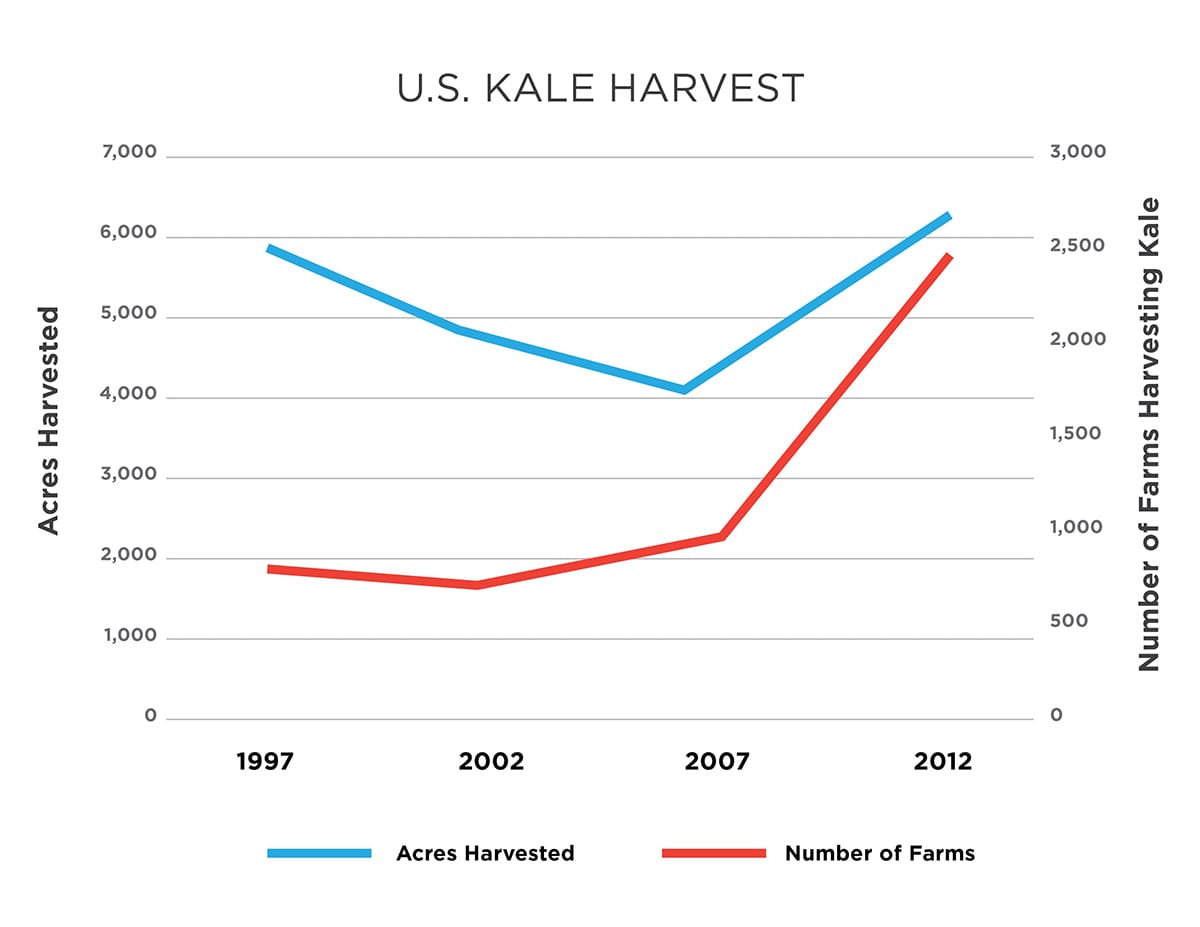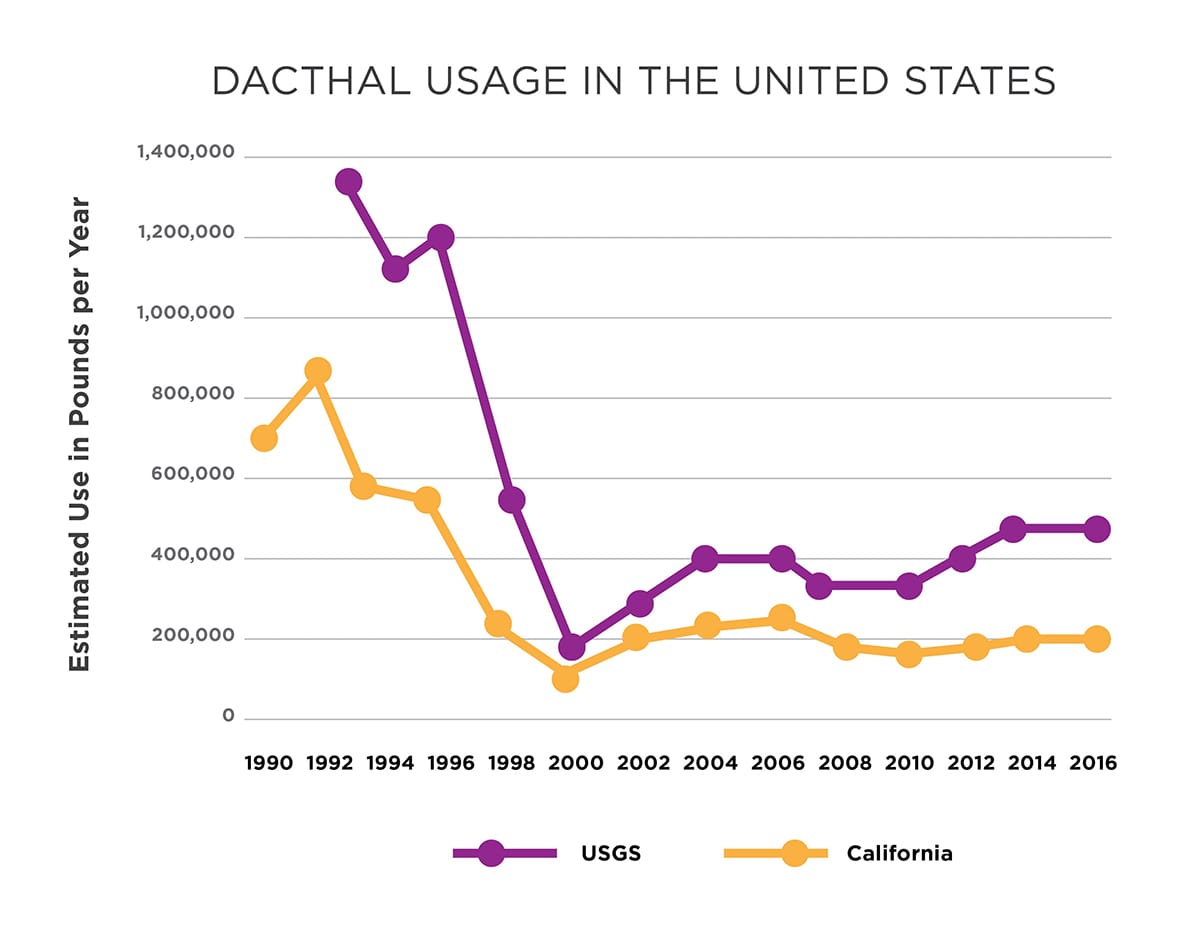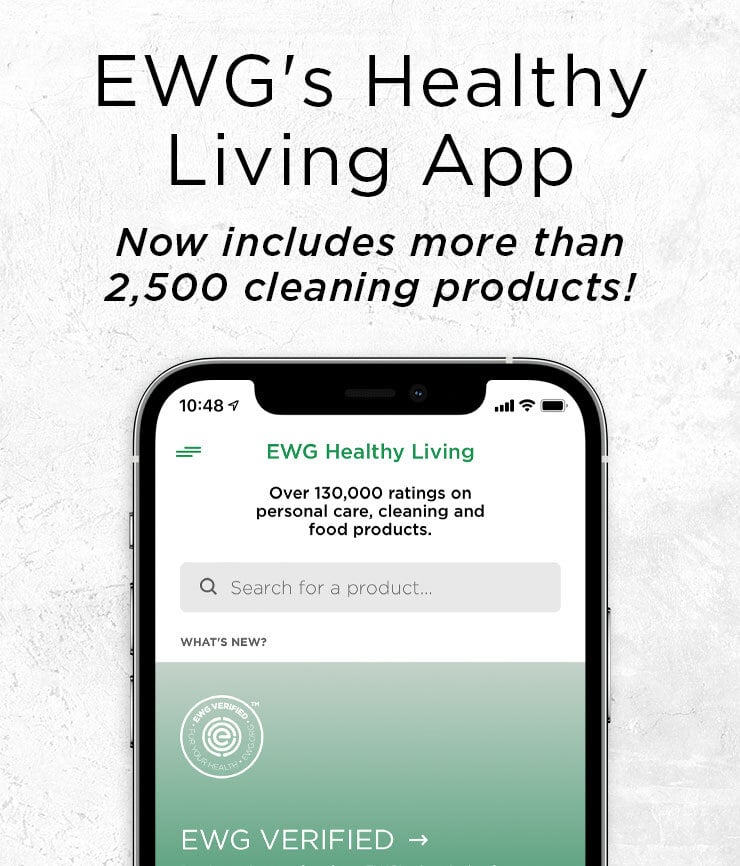More than half of kale samples tainted by possibly cancer-causing pesticide
By Alexis Temkin, PhD, Toxicologist
UPDATED: THURSDAY, April 7, 2022
Nearly 60 percent of kale samples sold in the U.S. were contaminated with residues of a pesticide the Environmental Protection Agency considers a possible human carcinogen, according to EWG's analysis of 2017 Department of Agriculture test data.
The pesticide is DCPA, often marketed as Dacthal, which the EPA classified as a possible carcinogen in 1995. In 2005, its major manufacturer voluntarily terminated its registration for use on several U.S. crops, including artichokes, beans and cucumbers, after studies found that its breakdown products were highly persistent in the environment and could contaminate drinking water sources.
For these reasons, in 2009 the European Union prohibited all uses of Dacthal. Yet it is still used in the U.S. on crops such as kale, broccoli, sweet potatoes, eggplant and turnips.
Other leafy greens are also widely contaminated with Dacthal. More than 35 percent of collard and mustard green samples analyzed by the USDA in 2019 were tainted with detectable levels of Dacthal.
Even as leafy greens' popularity as health foods rich in vitamins and antioxidants has soared in recent years, the level and type of pesticide residues on kale and other greens has expanded significantly. EWG's new analysis puts kale, collard and mustard greens third on the 2021 Dirty Dozen™. Recent EWG-commissioned tests of kale from grocery stores found that on two of eight samples, Dacthal residues were comparable to the average level reported by the USDA.
Between 2007 and 2012, the acres of kale harvested in the U.S. grew by more than 56 percent, with more than 2.5 times as many commercial farms growing it.

Source: EWG, from USDA National Agricultural Statistics Service
Non-organic kale farming relies heavily on the use of several synthetic pesticides, including Dacthal. The EPA's 1995 classification of it as a possible carcinogen noted increases in liver and thyroid tumors. Dacthal can also cause harm to the lungs, liver, kidney and thyroid.
According to U.S. Geological Survey data from 2016, about 500,000 pounds of Dacthal was sprayed in the U.S., mostly in California and Washington state. In California, the only state where all pesticide use must be reported, nearly 200,000 pounds were sprayed in 2016.
In states with high Dacthal use, concerns have grown about the capacity of its breakdown products to contaminate surface and groundwater. Not only can Dacthal contaminate areas near its use, but studies indicate it can also travel long distances in the atmosphere.
A report by the Washington State Department of Agriculture recommended a complete phaseout of Dacthal in the state beginning in 2015. In California, Dacthal breakdown products were detected in groundwater wells above the EPA health advisory level for these contaminates, triggering potential action to restrict the use of Dacthal under state law. But Amvac, a California-based manufacturer of Dacthal, argued that such uses were not a concern for human health. Siding with the manufacturer, the California Office of Environmental Health Hazard disregarded the human health risks of this pesticide.

Source: EWG, from California Dept. of Pesticide Regulationand the U.S. Geological Survey's Pesticide National Synthesis Project.
Dacthal can also drift into the air and homes around farms where it is sprayed. A recent study led by scientists at the University of California at Berkeley School of Public Health found that more than 50 percent of adolescent girls from farm communities in the Salinas Valley were exposed to Dacthal. This is especially concerning, given that Dacthal is also a suspected endocrine disruptor ' a chemical that can affect hormones ' and may be particularly harmful to thyroid function.
In 2014, the EPA reviewed Dacthal as part of the Endocrine Disruptor Screening Program, concluding that Dacthal may interact with thyroid signaling, and requested more data on thyroid toxicity for sensitive populations like children and the developing fetus. Earlier studies have reported that Dacthal, as sprayed on fields, may be contaminated with two carcinogenic and highly toxic impurities: a dioxin-like compound called TCDD, and hexachlorobenzene.
Analysis of recent USDA data shows that on average, leafy green samples, such as kale, collards and mustard greens, had detectable levels of 5.4 different pesticides, with a maximum of 21 different residues on a single sample. And 86 percent of samples had detectable levels of two or more pesticide residues.
Additionally, one of every four leafy green samples contained bifenthrin and cypermethrin, two types of pyrethroid insecticides. Recent epidemiological data finds that metabolites of these pesticides detected in the urine of children are associated with adverse neurological outcomes. such as attention deficit/hyperactivity disorder.
Previous USDA kale tests showed 30 percent of kale samples also had detectable levels of imidacloprid, a potentially neurotoxic neonicotinoid insecticide banned in the EU because of harm to bees. However, the USDA's 2017 round of tests did not analyze kale for imidacloprid, even though it is still likely used on the crop. In an email to EWG, the USDA explained the omission was because imidacloprid was inadvertently left off the list of compounds to be tested by its lab.
Imidacloprid was detected on 30 percent of collard greens and 27 percent of mustard greens in 2019 USDA tests.
Kale and other leafy greens are extremely nutritious vegetables, high in vitamins A and K and iron, and consumption of leafy greens is associated with reduced risk for cardiovascular disease. With so many different varieties of greens to choose from, everyone can find one to incorporate into their diet. As with all produce, EWG recommends choosing kale, collard and mustard greens that are organically grown.
We also recommend using greens in recipes with ingredients like lemon juice, red peppers or tomatoes, which are rich in vitamin C, since that helps the body absorb their plentiful nutrients.
This article was adapted and updated from the 2021 Shopper's Guide to Pesticides in Produce™.
Other EWG Resources

EWG's Tap Water Database

Children's Health Initiative

EWG's Healthy Living App

Guide to Healthy Cleaning

EWG's Food Scores

EWG's Skin Deep

Safe Cell Phone Use





 Skin Deep
Skin Deep
 Cancer Prevention Within Reach
Cancer Prevention Within Reach
 Shopper's Guide to Pesticides in Produce™
Shopper's Guide to Pesticides in Produce™
 Guide to Healthy Cleaning
Guide to Healthy Cleaning
 EWG's Tap Water Database
EWG's Tap Water Database
 Food Scores
Food Scores
